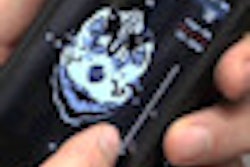Tuesday, November 27 | 9:30 a.m.-9:40 a.m. | VSIN31-05 | Room E351
A research team from Massachusetts General Hospital will present data from a study that analyzed the iPad's diagnostic accuracy with chest radiographs.While radiographs are useful for emergency diagnosis and are readily available, it's crucial to evaluate the modality's performance with the iPad, according to presenter Dr. Supriya Gupta.
In this trial, the team examined the iPad's utility with chest radiographs. As part of a retrospective ongoing evaluation, a chest radiologist read 30 cases of chest radiographs that were performed following tube placement in the intensive care unit and with the presence of pneumothorax.
The chest radiologist first read the studies in a blinded fashion on the iPad using the institution's internally developed RadPad image viewer, and then, one week later, read them again on a PACS workstation. The researchers divided findings into pneumothorax and nonpneumothorax categories and compared interpretation accuracy with the reports produced on PACS. The radiologist also graded confidence on a scale of 1 (unacceptable) to 5 (equal to PACS) for the studies read on the iPad.
The team found that the observer's findings were highly concordant (r = 0.9122) for pneumothorax cases. However, that wasn't the case for nonpneumothorax findings (r = 0.64) such as infiltrates and effusions, according to the researchers.
"Studies such as this trial can provide valuable data for using the iPad and help design guidelines, thereby establishing consistency and uniformity for utilizing mobile devices," Gupta said.




















